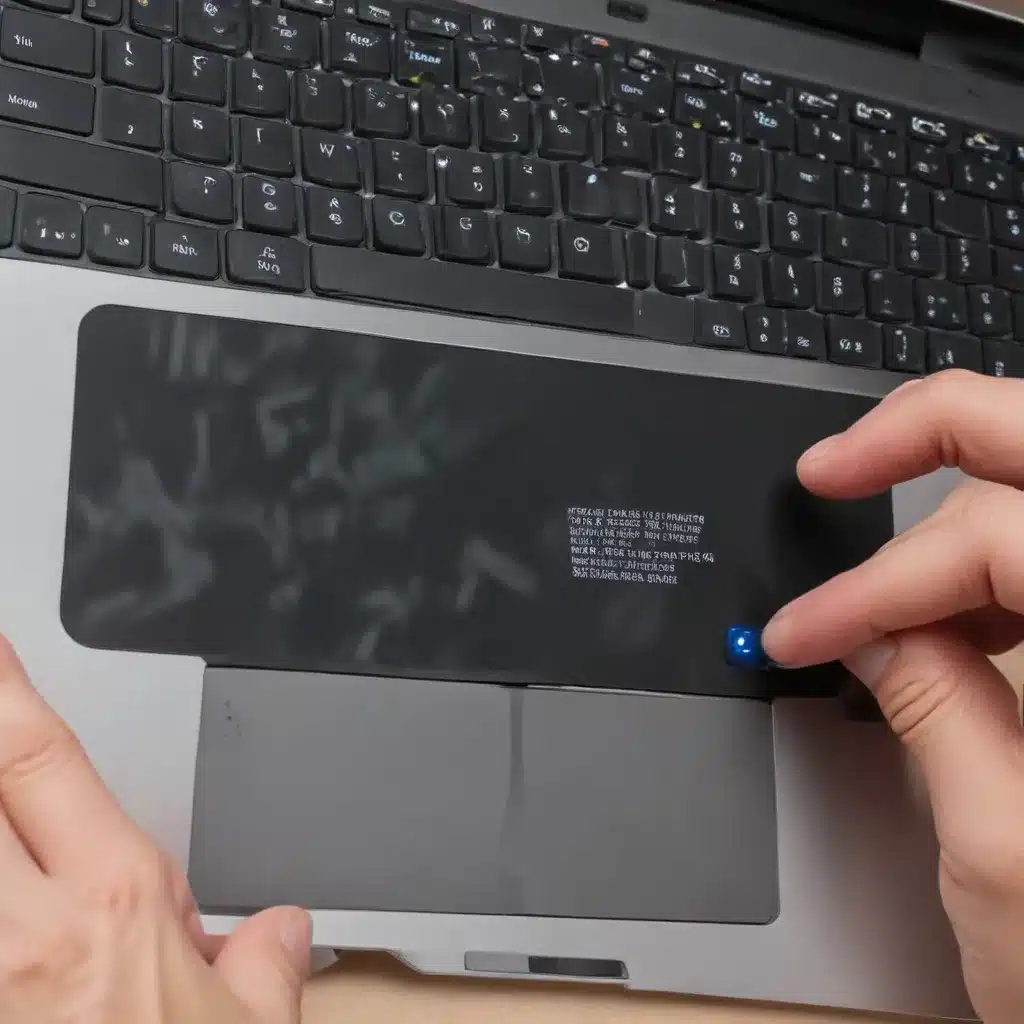
As an experienced IT professional, I’ve encountered numerous issues related to laptop touchpads, including the common problem of unresponsive or faulty clicks. In this comprehensive guide, I’ll provide practical tips and in-depth insights to help you troubleshoot and resolve touchpad button problems, ensuring a smooth and seamless user experience.
Identifying the Issue
Laptop touchpads are complex components that can malfunction for various reasons. The most common signs of a faulty touchpad button include:
- Unresponsive Clicks: The physical click action of the touchpad does not register, even with firm pressure.
- Intermittent Clicks: The touchpad clicks work intermittently, sometimes registering the click and other times not.
- Incorrect Click Registration: The touchpad registers the wrong click type (e.g., left click instead of right click).
These issues can be frustrating and impact your productivity, but don’t worry – there are several troubleshooting steps you can take to address the problem.
Troubleshooting Touchpad Button Issues
Step 1: Check the Touchpad Settings
The first step in resolving touchpad button issues is to ensure that the touchpad is properly enabled and configured. Follow these steps:
- Verify Touchpad Functionality: Use the function key combination (e.g., Fn + F7) to enable or disable the touchpad. If the touchpad is disabled, enable it and see if the click functionality is restored.
- Access Touchpad Settings: Locate the touchpad settings in your operating system’s control panel or device settings. Depending on your laptop model and OS, the exact location may vary, but you’re typically looking for options related to “Touchpad,” “Mouse,” or “Pointer Devices.”
- Adjust Touchpad Settings: Experiment with different settings, such as enabling or disabling “Tap to Click,” adjusting click sensitivity, or configuring gestures. These changes may help resolve unresponsive or incorrect click registration.
Step 2: Update or Reinstall Touchpad Drivers
Outdated or corrupted touchpad drivers can be a common cause of button issues. Try the following steps:
- Check for Driver Updates: Ensure that your touchpad drivers are up-to-date by visiting your laptop manufacturer’s website and downloading the latest driver package.
- Uninstall and Reinstall Drivers: If updating the drivers doesn’t work, try uninstalling the existing drivers and then reinstalling them. You can do this through the Device Manager or the manufacturer’s driver utility software.
- Install Intel Serial I/O Drivers: If your laptop uses an Intel chipset, make sure the Intel Serial I/O drivers are properly installed, as they are often required for proper touchpad functionality.
Step 3: Adjust BIOS Settings
In some cases, the touchpad button issue may be related to BIOS settings. Try the following:
- Enter BIOS: Restart your laptop and enter the BIOS setup. The specific key to press will vary depending on your laptop model, but it’s often F2, F12, or Del.
- Locate Touchpad Settings: Look for an option related to the “Touchpad,” “Internal Pointing Device,” or “PS/2 Mouse” settings. The exact terminology may differ, but you’re looking for a setting that allows you to change the touchpad’s interface mode.
- Switch to PS/2 Mode: Try changing the touchpad setting from “I2C” to “PS/2” mode. This can sometimes resolve unresponsive or faulty click issues.
- Save Changes and Restart: After making the necessary changes, save the BIOS settings and exit. Restart your laptop, and the touchpad should now be working correctly.
Step 4: Check Hardware Connections
If the software-based troubleshooting steps don’t resolve the issue, it’s possible that the problem is hardware-related. Follow these steps:
- Inspect the Touchpad Cable: Carefully inspect the cable that connects the touchpad to the motherboard. Ensure that it is firmly seated and not damaged.
- Reseat the Touchpad Cable: Gently disconnect and then reconnect the touchpad cable to ensure a secure connection.
- Check for Debris: Examine the touchpad area for any debris or obstructions that may be interfering with the click mechanism.
Step 5: Replace the Touchpad
If the above steps don’t resolve the issue, the touchpad itself may be faulty and require replacement. Depending on your laptop model, you may be able to purchase a replacement touchpad kit from the manufacturer or a third-party supplier.
When replacing the touchpad, be sure to follow the manufacturer’s instructions carefully, as the process can vary depending on the laptop model. This may involve removing the keyboard, palm rest, or other components to access and replace the touchpad.
Preventing Future Touchpad Issues
To minimize the risk of future touchpad button problems, consider the following preventive measures:
- Keep Drivers Up-to-Date: Regularly check for and install the latest touchpad driver updates from your laptop manufacturer.
- Avoid Excessive Force: Be gentle when using the touchpad, as applying too much pressure can damage the click mechanism over time.
- Keep the Touchpad Clean: Regularly clean the touchpad surface and surrounding area to prevent the buildup of dirt, debris, or liquids that could interfere with the click functionality.
- Consider a Touchpad Protector: Use a touchpad protector or cover to shield the surface from wear and tear, reducing the risk of button issues.
Conclusion
Troubleshooting and resolving touchpad button problems can be a frustrating experience, but by following the steps outlined in this guide, you’ll be well on your way to restoring the smooth and responsive click functionality of your laptop’s touchpad. Remember, if the issue persists or you’re unsure about the appropriate course of action, it’s always recommended to consult with a professional IT technician or reach out to your laptop manufacturer’s support team for further assistance.
For more IT solutions and computer repair tips, be sure to visit ITFix.org.uk, where our team of seasoned professionals is dedicated to providing practical and in-depth insights to help you overcome technical challenges.












